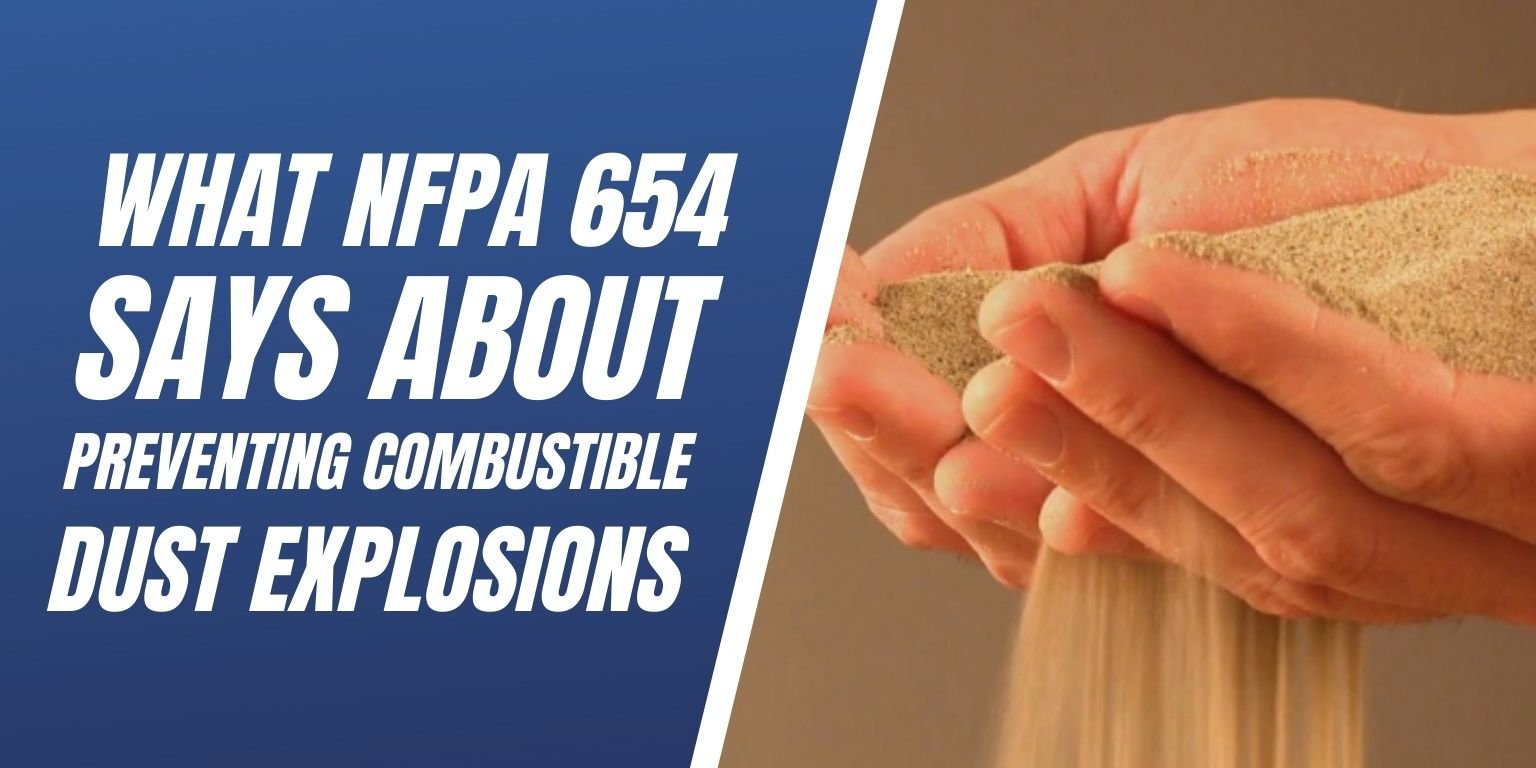
Dust is created from the manufacturing process within most facilities; which includes dust from wood, plastics, coal, sugars, paper, textiles, metals, chemicals and more! When this dust is not contained it can create hazardous conditions for workers within the building, and several rules and standards have been put in place outlining the proper way to manage these dust accumulations. So, what do these codes say about the proper way to clean combustible dust?
What NFPA 654 Says About The Proper Way To Clean Combustible Dust
The ‘NFPA 654 Standard for the Prevention of Fire and Dust Explosions from the Manufacturing, Processing, and Handling of Combustible Particulate Solids’ is used to manage and prevent combustible dust hazards. It covers what industries are at risk, what creates combustible dust risks, how to prevent combustible dust explosions, and other important information.
One area of NFPA 654 that is particularly relevant to the combustible dust remediation services is Chapter 8, which deals with housekeeping and cleaning procedures. In this chapter it provides details for the frequency that combustible dust needs to be cleaned to reduce risk, what types of methods can safely be used to clean the combustible dust, and what cleaning methods can actually create more of a risk.
Two common dust cleaning methods that go against NFPA 654 codes:
- Using compressed air to clean dust accumulations. Blowing dust using compressed air creates the dangerous dust cloud that can easily ignite.
- Using regular vacuum cleaners that are not grounded or static dissipative. Plastic hoses and collection areas on a standard vacuum can create static electricity when dust particles move through it, and the exhaust vent can blow dust into a cloud. Even a spark from static electricity can be enough to ignite a combustible dust cloud.
Many fires or explosions have been created when someone was performing cleaning this way. So how do you clean combustible dust?
NFPA 654 Approved Ways of Cleaning Combustible Dust
Using the Right Safety Equipment
Use equipment approved for combustible dust cleaning, such as intrinsically safe vacuums and grounded hoses. Contact vacuuming with this type of equipment lessens the risk of a dust explosion during the cleaning process. The filtration system of the vacuums is grounded to provide a spark-free operation.
Wearing Appropriate Safety Gear
Making sure that wearing safety gear while cleaning combustible dust is an important part of cleaning combustible dust. Using the proper PPE gear will help to ensure the health and safety of the individual who is removing the dust.
Training and Certification
Having the proper training for cleaning combustible dust is one of the most important parts of cleaning combustible dust. Technicians should be trained in OSHA’s 10- or 30-hour Safety, Aerial Lifts, Confined Spaces, First Aid, CPR, and Combustible Dust Safety and Awareness.
In OSHA’s Combustible Dust National Emphasis Program, two of the most common citations were improper housekeeping, including combustible dust accumulation, and use of compressed air to blow down combustible dust.
This is why a professional cleaning company needs to come in to remove combustible dust. They will have been provided with the proper PPE, OSHA training, and industrial dust removal equipment.
If you need a professional team to clean the combustible dust in your facility and get it up to code, Contact Us Here, or call 888-845-3952.
Hughes Environmental technicians are fully trained on the proper and safe methods for cleaning combustible dust and use grounded & explosion proof industrial vacuums.

